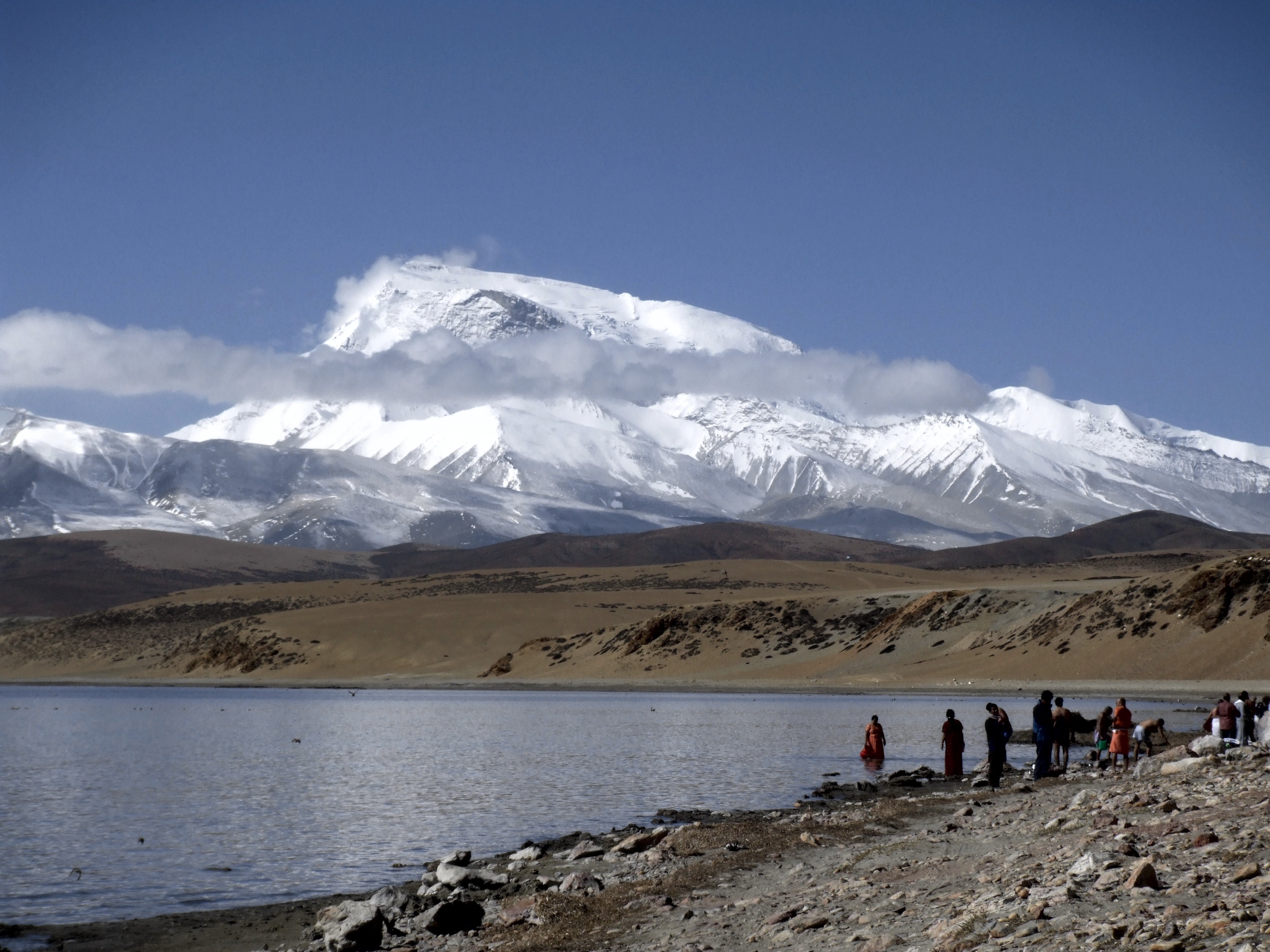In the high Himalayas the beauty and majesty of nature is a tangible presence, and a power to be reckoned with. Humans seem tiny amidst the towering mountains, expansive plateaus and vast sky. Storms can sweep over farms and destroy all the crops with huge hail in a matter of minutes. Snows can bury roads, houses and livestock. The rivers flowing from the snowmelt in summer are essential to survival in this high desert. As a result of the qualities of this unique, fragile, and beautiful landscape, Tibetans hold nature very sacred, and constantly work to bring balance between nature and human activities through their spiritual practices.
In Tibetan monasteries each day begins with prayers offered with burning cedar to bring balance and harmony with the spiritual energies of nature. Mountains, streams, trees and the earth itself are seen to be the home of myriads of unseen spiritual beings. When people go about their activities it is considered to be very important to remember the presence of the energies of nature, and avoid conflicts caused by cutting trees, damming rivers, killing animals, or polluting the air. When farmers till the earth, they ask for the help and support of the earth energies to encourage the healthy growth of their crops. This respect and honoring of the earth, waters, plants and air leads to a harmonious relationship with nature, one in which humans seek to be in balance with their environment. Traditional Tibetan cultural values result in humans living a sustainable way within a very fragile and demanding natural environment.
This environment is seen as the interplay of the five elements: space, wind, fire, water and earth. These five elements are present in every dimension of our world in varying degrees, and the balance or imbalance of these elements results in how people relate to their world and others. For example, a person with a dominance of the fire element will become easily angry, or a person with too much earth will have difficulty thinking in new ways or initiating change. There are several methods to bring the elements into harmony within each person, and a simple one it to meditate in nature where the element that is needed is present. For instance, since water brings flexibility and flow to life, if one is feeling stuck you can sit by a running stream gazing into the water, listening to the sounds of currents, to replenish the flexible qualities of water within themselves.
The modern industrialized world has much to learn from cultures that have traditionally valued balancing human activities with the natural environment. Clearly seeing nature as something to exploit without restraint is having disastrous consequences for our world. The study of indigenous cultures’ way of relating to our world is one way we can bring modern society back into balance with the earth, the source of all life.
